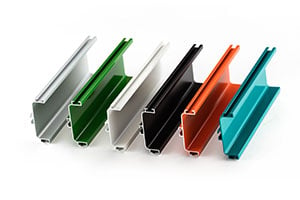1. Your Extrusion Design Doesn't Work
Sometimes designs just don’t work. What was thought to be a brilliant idea might turn out to be more complicated than planned. Also, sometimes issues aren’t found until the last minute, which means your lead time has increased and your project has now been delayed.
We advise taking your time with designs; it’s better to get the product right first time to avoid increasing your lead time. If you are looking for design support, our in-house service is available. Find out more here.
We also offer a 3D printed prototype service, which can help this eliminate possible design flaws that may flag up later in the process.
2. Seasonal Trends / Shut Down Times
There are a couple of times throughout the year where factories/manufacturers shut down for maintenance. Orders are back logged and machines are block booked.

A good manufacturer will take this into consideration as it is a huge factor that could increase your lead time if you get caught up in the backlog of bookings.
Being aware of any shutdown periods and ordering your extrusion before any shutdowns start can make a difference. If you're concerned about having space for your order, you can take advantage of our stock holding facility, making your product available when you need it.
3. Number Of Additional Extrusion Operations
Adding additional operations to your order will increase your lead time. Whether it’s a type of fabricating or finishing, it’s going to make the process longer.

Often, there are several suppliers involved to complete those extra finishes to your profile which usually means a lot of chasing around and not getting any further forward.
Sourcing a supplier who can handle the machining, fabricating, finishing and other additional services will help to reduce lead times.
We offer everything in-house, from initial design assistance and prototyping, machining and fabricating, to finishing and stockholding. Find out more here.
One-Stop-Shop Service
It’s not often you find a reliable supplier who ticks all the boxes.
Bringing your supply chain together and making it a simpler process can reduce lead times dramatically but how do you go about doing that?
Not everyone will want to change suppliers, many will stick to the same supplier they have known for years even though they encounter these delays.

At BWC Profiles, our aim is to make your extrusion project as easy and hassle-free as possible.
By easy, I mean bringing all your manufacturing needs together and managing all the complexity for you.
This is why we offer a one-stop-shop service, and being your single point of accountability for all your aluminium extrusion and plastic extrusion needs.
From 3D design support to fabricating, finishing and stock holding, everything is dealt with in one place. No more having to chase around multiple suppliers to see where your product is.
Whether you are looking for technical design support because you’re unsure if your design is extrudable or wanting a reliable supplier to ensure your profile will be ready on time, BWC Group offer a range of services to help get your project underway.
Get in touch to find out more and don't forget to check out our other blogs and articles, including: 5 Things To Consider When Selecting A New Supplier, which includes a checklist of handy questions you can ask.

.png?width=150&height=70&name=BWC%20Logo%20(Custom).png)



